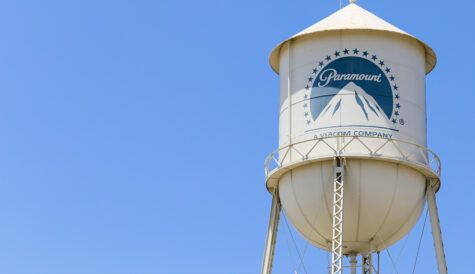
After more than 40 years of operation, DTVE is closing its doors and our website will no longer be updated daily. Thank you for all of your support.
How to build a FAST channel
Channel operators are in a race to launch the latest first-rate FAST channels, but the model’s framework and discoverability are key factors for successful outcomes. Powered by years of double-digit growth, online video advertising revenues are forecast to soar above ‘traditional’ linear TV ad revenues. While traditional TV ad spend remains stagnant at around $150bn worldwide between 2021 and 2025, online video ad revenue is expected to grow over 10% CAGR to top $275bn in three years (per Omdia forecasts). Already, around a quarter of US internet users already watch a combination of AVOD and SVOD channels, according to Ampere Analysis.
Powered by years of double-digit growth, online video advertising revenues are forecast to soar above ‘traditional’ linear TV ad revenues. While traditional TV ad spend remains stagnant at around $150bn worldwide between 2021 and 2025, online video ad revenue is expected to grow over 10% CAGR to top $275bn in three years (per Omdia forecasts). Already, around a quarter of US internet users already watch a combination of AVOD and SVOD channels, according to Ampere Analysis.
Meanwhile, the continuing economic crisis is reinforcing the conditions for ad-funded video business models. With consumers increasingly using their TV to stream content directly, connecting via apps and inbuilt IP services, insights firm Kantar reckon we’ve now reached the tipping point in Smart TV penetration and usage. In fact, we should get used to the term ‘Advanced TV’ which embraces addressable, connected TV streaming and VOD.
While launching FAST channels might be rewarding, several aspects need to be thoroughly considered before embarking on such a journey. First of all, the technical solution to originate a FAST channel must be cost-effective enough to not break the content owner’s balance sheet.
The solution also needs to be scalable enough to support originating several channels and to cope with viewership spikes as they happen. Additionally, adapting to the different tech requirements – which range from ad markers syntax and EPG to poster formats – of local and international FAST platforms is important.

Ahmed Swidan
“To make content more discoverable, EPG and metadata must be correctly populated with the right keywords, and with agile technical adaptation to the different FAST platforms EPG ingest requirements,” says Ahmed Swidan, director of Personalised TV at Ateme. “Ultimately, these FAST channels are made for profit, so all of the above needs to be achieved while maintaining healthy economics for the content owner.”
Creating simple metadata (e.g., defining the content type and title) can have a direct and dramatic impact on expected CPMs.
Then comes the bigger-picture question: How can FAST platforms differentiate from each other? The answer is partially the most popular sentence in our industry: Content is king. The better the content, the more viewers will flock to the platform to consume it.
“We’ve seen several examples of established web publishers entering FAST with niche channels (e.g. cooking, travel, crime, etc.) that are capturing viewers’ attention on the big screen,” says Swidan. “How content is scheduled on each channel also seems to influence viewership, but this seems to be more of an art than a science.”
Scheduling (or origination) is one of the most critical parts of the channel creation process. You need to create a schedule that keeps viewers engaged, cycle in fresh content, and present a broadcast-quality experience to be successful.
Furthermore, respondents to DTVE highlight the importance of streamlining media processing. The origination platform should be able to encode both the channel and incoming ads to ensure a seamless experience. That’s why metadata management, break conditioning, and ad inventory monetisation are imperative to succeeding in the FAST market.
“The digital advertising space has been driven by social media ad inventory for years, in which advertisers’ key differentiator and key driver is the ability to precisely target the audience,” says Laurent Potesta, CEO at Ad Insertion Platform, which specialises in DAI services. “Advertisers’ interest in FAST and AVOD ad inventory stems from the fact that those technologies combine the benefits of traditional TV ad inventory (big screen, good retention, high reach) with targeting capabilities (geo, device, user, interest, code).”
Potesta adds, “That is why it is critical to ensure that you can retrieve data by content, device and, as much as possible, user data to optimise targeting and then increase the fill rate and the ad value.”
Going deeper into this we learn that metadata can be a significant barrier to entry.
“It’s critical to get break timing right to ensure seamless ad breaks. Unfortunately, creating break timing is mostly a manual process if data isn’t already captured,” says Rob Gambino, snr director, Advertising and Content Personalisation Solutions, Harmonic. “Most of the platforms still have different metadata requirements, although they are starting to accept Gracenote instead of their own proprietary formats.”
Tackling challenges
Each platform has its own set of expected bitrates, which can be challenging. Gambino explains that Harmonic’s technology allows you to encode once and deliver to all platforms without duplicating work.
“Monetisation is a big challenge,” he says. “Each platform does monetisation differently and assumes it is the only platform you’re launching on. That is almost never the case. Most of the platforms have made no effort to provide interoperability.”
When it comes to building and scheduling FAST channels technologies like Harmonic’s VOS360 cloud SaaS platform offers automated tools to simplify the process. With it, Harmonic explains that operators can automatically schedule a series or insert ad breaks. Integration with online graphics platforms makes it easy to insert complex graphics and branding, “assuring the creation of superior-quality FAST channels,” adds Gambino.
“These capabilities will make your channel sticky, but they don’t solve discoverability issues. To optimise discoverability channel creators must focus on improving metadata management.”
A major plus for channel owners and agencies is the ability to gather data from the multiple device points at which the consumer is accessing content. Analysis of data helps establish patterns in viewer behaviour and improve the monetisation of content.
Analytics is composed of dimensions such as date range, viewed channels, viewing device, region of the viewer, titles watched, and more. These dimensions are observed for a variety of metrics including the total number of sessions, viewership hours, and average duration.
Ad analytics can help channel providers take better decisions on changing their ad-network too. Important metrics record the number of ad impressions during a slot and the conversion rate (the total number of impressions received divided by the total number of ad assets). Other metric include ad responses received after sending the request and ad assets received, where one response can have multiple assets.
The ad completion rate is calculated as the total number viewers who started watching the ad assets. Metrics for the number of impressions recorded can be broken into quarters (25%, 50% watched by the consumer and so on).
“Based on insights into ad performance, FAST platforms can determine the ideal ad load and how frequent the ad breaks must be,” says Amagi. “Content owners can work closely with their tech vendors in defining best practices to deliver personalised ad experiences, that will ensure audiences stay on their channels. Most importantly, they can fine tune their ad insertion and conversion processes to ultimately attract more revenues.”
Where advertisers know that their ads perform well and are being placed in a trusted environment, they are likely to invest more, also leading to better ad revenues – a vital aspect of FAST content delivery.
Advertisers will pay for quality content and an addressable audience but quality content can mean many things. A syndicated episode of Friends is one example of content that stays fresh forever. Random YouTube clips, on the other hand, won’t cut it in the FAST market anymore.
“The market is working on addressability, especially since most of the platforms don’t require logins,” reports Gambino. “Work is being done on blind ID matching, allowing advertisers to target without violating end-user privacy. The platforms that are early-adopting those methods are reaping more ad dollars.”
Both Ateme and Harmonic point out that choosing the right monetisation partner can be the difference between a profitable channel and a mediocre one. It may be tempting to hand your ad inventory over to the ad server platforms and let them cut you a check, but they will always underperform a dedicated partner. Harmonic for instance is partnered with Beachfront to optimise its customers’ inventory.
Another trend on the rise, noted by Swidan, is that FAST platforms license content from each other, with each of them shooting to be the ultimate aggregator in the FAST game. How this trend will evolve is yet to be seen.



